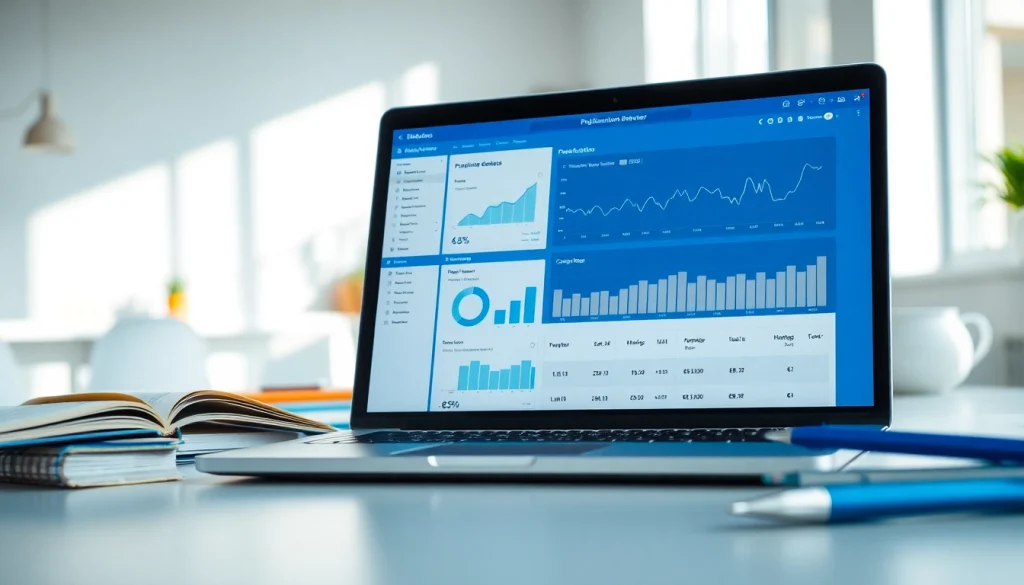Understanding the Importance of Plagiarism Detection
In an era where information is readily accessible and the volume of content created daily is staggering, the importance of maintaining originality has never been more paramount. Every day, students, educators, writers, and businesses strive to produce authentic work. Using a plagiarism detector becomes essential not just for ensuring academic integrity, but for preserving the reputation of individuals and organizations alike. This article explores the significance of plagiarism detection, the array of tools available, and the implications of plagiarism across various sectors.
Why You Need a Plagiarism Detector
As educational institutions increasingly emphasize academic integrity, the demand for plagiarism detectors has surged. These tools analyze text against a vast database of published works and online content, identifying similarities that suggest potential plagiarism. Implementing a plagiarism detector not only helps uphold personal and institutional integrity but also enhances the overall quality of writing. By detecting paraphrased content and providing a means for re-evaluation, these tools play a vital role in the writing process.
Common Misconceptions about Plagiarism
Many individuals harbor misconceptions about what constitutes plagiarism. Some assume that it involves only copying text verbatim, while others believe that simply changing a few words in a sentence suffices to avoid plagiarism. In reality, plagiarism encompasses a range of actions, including:
- Verbatim copying without attribution
- Paraphrasing someone else’s ideas or text without proper citation
- Submitting work that is not one’s own
- Failing to attribute collaborators or sources appropriately
Understanding these nuances is crucial for anyone in the academic or professional writing arena. Recognizing that even unintentional plagiarism can have serious repercussions reinforces the need for reliable detection tools.
Consequences of Plagiarism in Academia and Business
The repercussions of plagiarism vary across settings but are profound nonetheless. In academic environments, students caught plagiarizing often face severe penalties, including failing grades, academic probation, or expulsion. For educators and institution administrators, maintaining high standards of integrity is critical to institutional reputation and effectiveness.
In the business sphere, the stakes are similarly high. Companies found guilty of plagiarism risk legal actions, loss of reputation, and financial penalties. Originality is directly tied to branding, and breaches of intellectual property can lead to competitive disadvantages.
Thus, both individuals and organizations benefit significantly from employing plagiarism detection tools to mitigate these risks.
How to Choose the Right Plagiarism Detector
With numerous plagiarism detection tools available, selecting the right one can be a daunting task. Not every tool suits every purpose, and understanding key features is crucial for effective detection.
Features to Look For in a Plagiarism Detection Tool
When evaluating a plagiarism detector, consider the following features:
- Database Size: A larger database provides a higher likelihood of detecting similarities with various sources.
- Scan Speed: Efficient tools should quickly process documents without sacrificing accuracy.
- Detailed Reports: The ability to generate comprehensive reports that categorize sources and highlight similarities is invaluable.
- User-Friendly Interface: A seamless user experience enhances usability for individuals without technical knowledge.
- Integration Options: Tools that integrate with popular writing software can streamline the writing process.
Prioritize these functionalities based on your specific needs, whether for academic, professional, or personal use.
Comparing Free vs. Paid Plagiarism Detectors
Free plagiarism detectors can be appealing, especially for students and casual writers. However, they often come with limitations such as restricted database access, reduced scanning capabilities, and less comprehensive reporting. Paid detectors, while they incur costs, generally offer superior performance in terms of accuracy, speed, and support. Companies with commercial interests may find that investing in a paid solution proves beneficial in the long run, considering the risks associated with potential plagiarism.
User Reviews: What Users Are Saying About Their Experience
User reviews can offer insightful information about various plagiarism detection tools. Prospective users should look not only at ratings but also at qualitative feedback. Positive reviews often mention ease of use, speed of detection, and the comprehensiveness of reports. Conversely, users often express frustrations regarding slow performance, false positives, or difficulty in understanding the results from less effective tools. Conducting thorough research based on user experiences can guide decision-making when choosing a plagiarism detector.
Step-by-Step Guide on Using a Plagiarism Detector
Utilizing a plagiarism detector effectively requires more than merely uploading a document and waiting for results. Following a structured approach enhances accuracy and insights drawn from the analysis.
Preparing Your Document for Analysis
Before submitting a document, ensure it is well-formatted and complete. Proper formatting includes correcting typos, structuring sections clearly, and ensuring adherence to any specific citation style required. A clean document allows the detector to perform more accurately, reducing errors in the report. For instance, non-standard characters or unformatted citations may affect results.
Interpreting the Results: What Each Metric Means
Results from plagiarism detectors typically include metrics such as:
- Overall Similarity Score: A percentage indicating how much of the document matches existing content.
- Highlighted Sections: Specific text areas showing where similarities occur.
- Source Links: Links or citations to the original material for comparison.
Understanding these metrics enables users to make informed decisions about revising content and addressing potential plagiarism before submission.
Implementing Changes Based on Plagiarism Reports
Upon receiving the report, review highlighted sections carefully. Depending on the similarity score and linked sources, consider paraphrasing, summarizing, or adding citations where necessary. The aim is to cultivate original thought while acknowledging influences, thus improving the overall integrity of the document.
Best Practices for Preventing Plagiarism
Using plagiarism detectors effectively is just one aspect of maintaining academic integrity; implementing best practices throughout the writing process can significantly reduce the likelihood of unintentional plagiarism.
Citing Sources Correctly: A Quick Guide
Correct citations serve as the backbone of academic writing. Familiarize yourself with the required citation style (APA, MLA, Chicago, etc.) and apply it consistently throughout your work. This includes:
- Accurate in-text citations for paraphrased and quoted material.
- Comprehensive reference lists or bibliographies at the end of your documents.
Moreover, learning proper citation techniques can minimize the risk of accidental plagiarism.
Using Plagiarism Detectors Effectively in Writing
Incorporating regular plagiarism checks throughout the writing process can be beneficial. Instead of waiting until the end, running sections of text through a detector can highlight issues as they arise. This proactive approach not only helps in maintaining originality but also aids in the iterative writing process, allowing for smoother revisions.
Educating Others About Plagiarism Prevention
Educating peers, students, or employees about the importance of plagiarism detection enhances overall integrity. Workshops, training sessions, and guides can provide knowledge on proper writing practices and the use of detection tools. Promoting an understanding of plagiarism through discussions fosters a culture of originality and respect for intellectual property.
Future Trends in Plagiarism Detection Technology
With advancements in technology, plagiarism detection continues to evolve. Staying informed about future trends ensures users can leverage the latest tools for their needs.
AI and Machine Learning in Plagiarism Detection
Artificial intelligence (AI) and machine learning play an increasingly crucial role in refining plagiarism detection capabilities. These technologies enable detectors to analyze writing styles, recognizing similarities beyond mere text matches. By distinguishing between intentional plagiarism and coincidental similarities, AI can deliver more accurate assessments, significantly enhancing the user experience.
Potential Changes in Academic Integrity Policies
As technology and awareness around plagiarism evolve, so too must academic integrity policies. Educational institutions may need to adapt their guidelines to address emerging challenges, integrating advanced tools into their academic frameworks to provide support and resources for students and educators alike.
The Role of Plagiarism Detection in Content Creation
In the realm of content creation, whether for blogs, articles, or marketing materials, plagiarism detectors serve as invaluable resources. As businesses prioritize originality to maintain credibility and audience trust, the seamless integration of these tools will become a standard practice, further emphasizing the need for authenticity in content creation.





